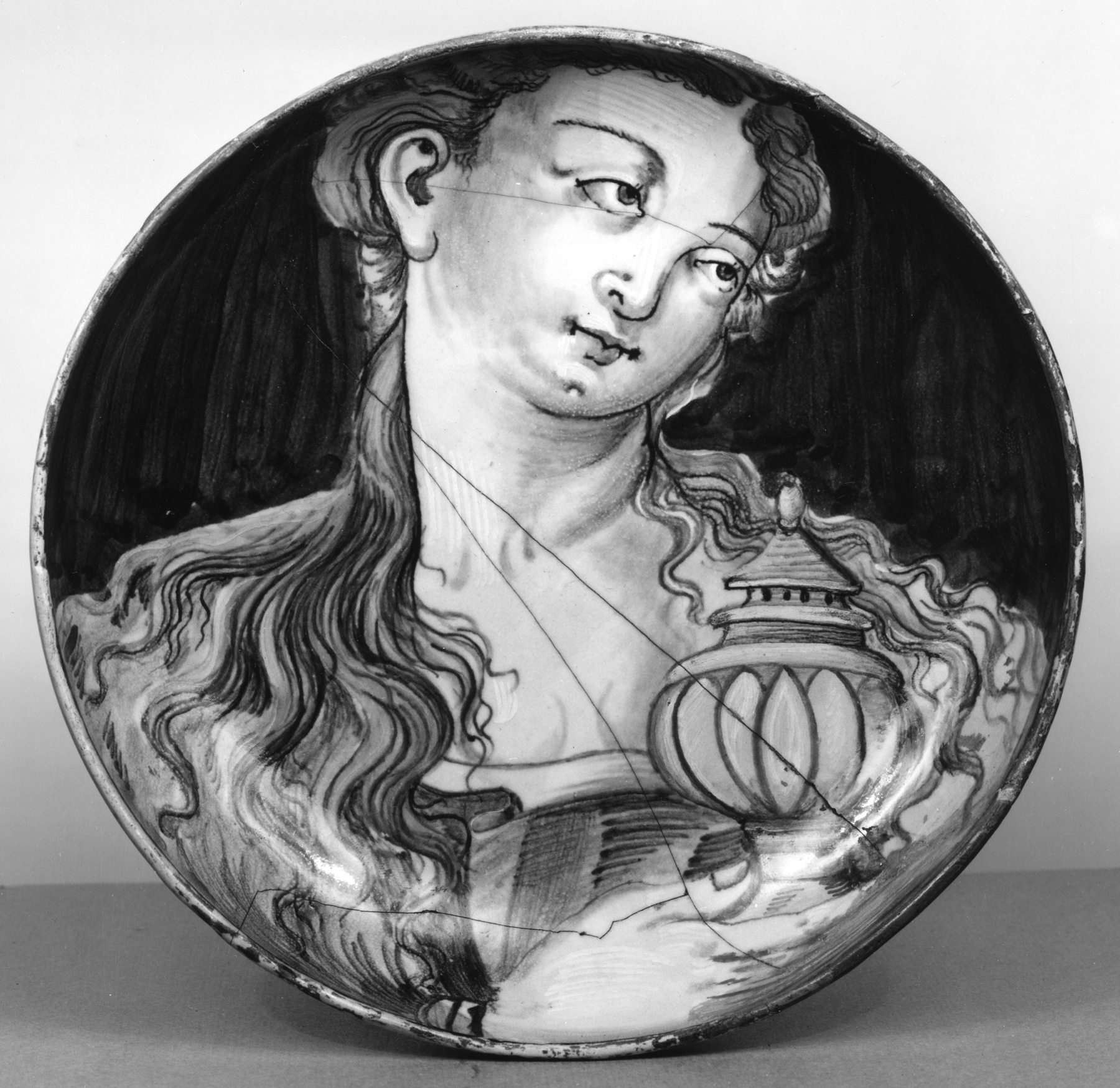Dish with Mary Magdalene
(Renaissance Europe )
The entire pictorial surface of this dish on a low foot consists of a bust of Mary Magdalene, identified by her long flowing hair and the ointment jar she carried to the tomb to anoint Christ’s dead body. She has brown eyes, and wears a blue dress. Her head is turned three-quarters to the right, with curling locks over both shoulders. Representations of Mary Magdalene were extremely popular in Italy during the Renaissance period, not only on maiolica wares, but also in paintings and sculptures (for example see 37.509). According to the Western Church tradition, Mary Magdalene was a prostitute who repented from her sinful ways upon meeting Christ. Artists thus often chose to represent her as a beautiful, sexually attractive woman, while still maintaining the work’s religious subject matter. The image is actually quite similar to dishes such as 48.1358 that celebrate idealized, presumably virtuous beauty of a beloved. The maker of this dish has not been identified. This dish is painted in blue, yellow,ochre, brown, black and opaque white.The back is bluish-white with one yellow circle near the rim. For more information on ‘maiolica,’ see 48.1336.
Provenance
Provenance (from the French provenir, 'to come from/forth') is the chronology of the ownership, custody, or location of a historical object. Learn more about provenance at the Walters.
Henry Walters, Baltimore [date and mode of acquisition unknown]; Walters Art Museum, 1931, by bequest.
Geographies
Italy, Urbania (Casteldurante) (Place of Origin)
Measurements
2 5/8 x 9 1/8 in. (6.7 x 23.1 cm)
Credit Line
Acquired by Henry Walters
Location in Museum
Not on view
Accession Number
In libraries, galleries, museums, and archives, an accession number is a unique identifier assigned to each object in the collection.
In libraries, galleries, museums, and archives, an accession number is a unique identifier assigned to each object in the collection.
48.1319


